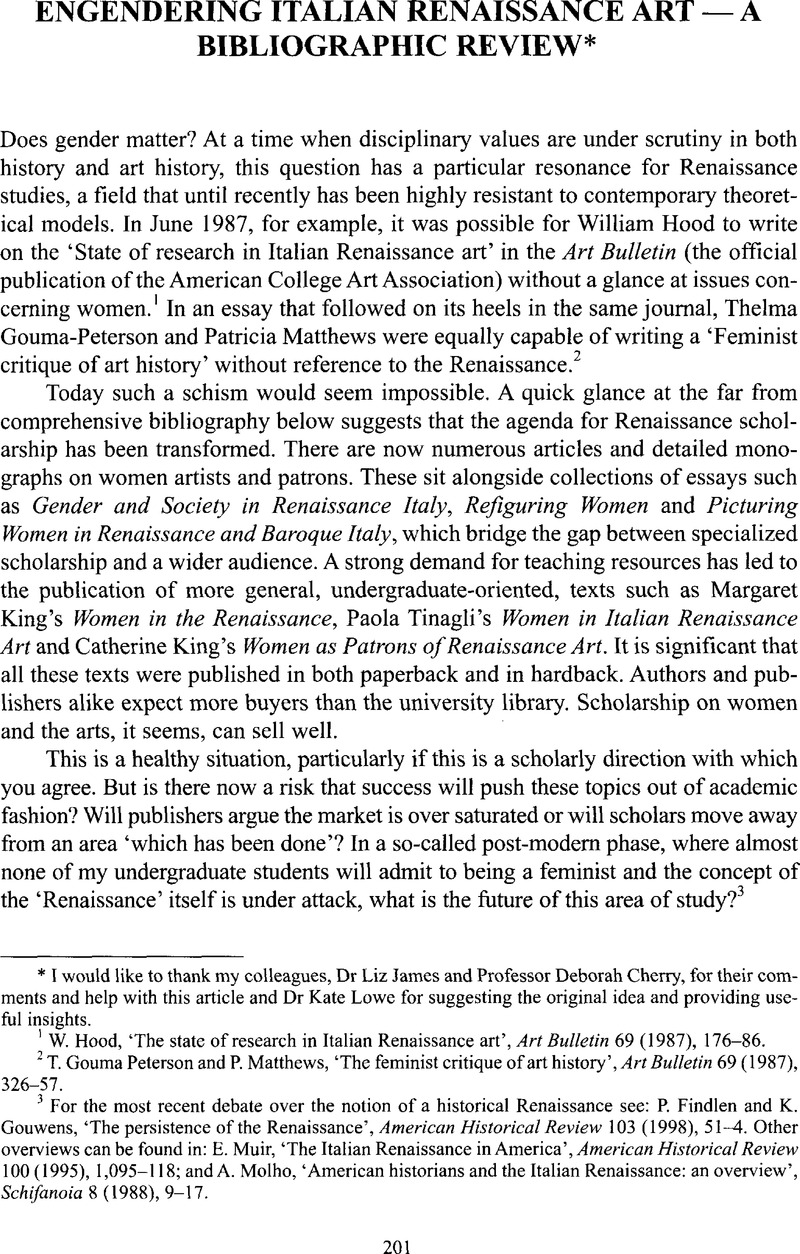Article contents
Engendering Italian Renaissance art — a bibliographic review*
Published online by Cambridge University Press: 09 August 2013
Abstract

- Type
- Articles
- Information
- Copyright
- Copyright © British School at Rome 2000
Footnotes
I would like to thank my colleagues, Dr Liz James and Professor Deborah Cherry, for their comments and help with this article and Dr Kate Lowe for suggesting the original idea and providing useful insights.
References
Select Bibliography
- 1
- Cited by




